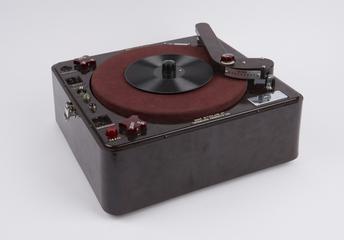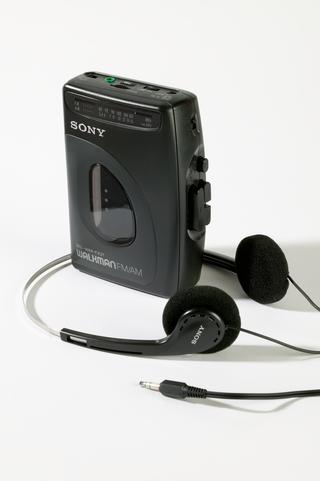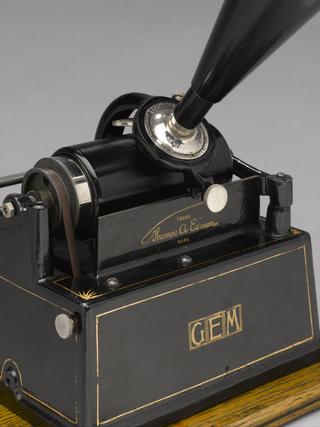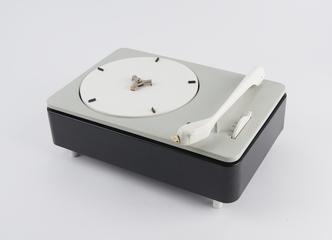
BBC midget disc recorder RDP/1A/139

BBC 'midget' portable disc recorder RDP/1A/139, made by the BBC and the Marguerite Sound Studios (MSS) Company, c.1944
The BBC developed this recorder with the Marguerite Sound Studios (MSS) Company to be able to report directly from the frontline of the Second World War. It was developed for use during D-Day (6 June 1944) and the subsequent Allied advance. Only 72 were ever made.
The recorder came with twelve 10-inch (25-cm) discs which had just under three minutes’ recording time on each side and there’s a light to warn the reporter when their time is nearly up. The discs themselves broke easily when they were cold, so in the winter, reporters kept them inside their coats to keep them warm. Reporters had to be careful of what they said as reports were recorded straight on to the disc and could not be edited.
The motor was a clockwork type used in gramophones, and the head, which cut the grooves of the recording into the disc, had a modified crystal pick-up. Despite its improvised appearance, the recorder has several refinements: a flickering light told the reporter when they were speaking at the correct level and there were two different recording modes: one to limit background noise and the other allow all the sounds of battle to be heard. Although it was designed to be portable, this equipment weighed about 18kg.
Many of the recordings made on this equipment were heard on War Report, a pioneering news programme which was first broadcast on D-Day and ran for 11 months. Transforming news reporting, the recorder brought listeners closer to the realities of the Second World War. Seventeen BBC reporters were embedded with the initial British and US invading forces. For reporter Guy Byam this meant jumping with the 6th Parachute Regiment and for Howard Marshall it involved wading ashore from his landing craft which had hit a mine – both had a 'Midget' Disc Recorder to share their experiences and what they saw. The legacy of this dynamic and action-packed reporting can still be seen in news coverage of much more recent conflicts.
Details
- Category:
- Sound Reproduction
- Object Number:
- 1981-1021
- Materials:
- wood (unidentified), metal (unknown) and electronic components
- type:
- audio equipment
- credit:
- Dr. A.J. Croft.



